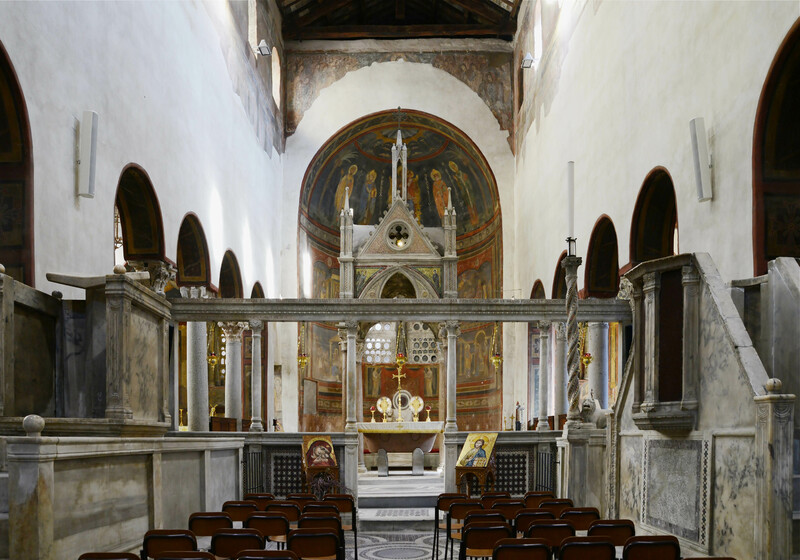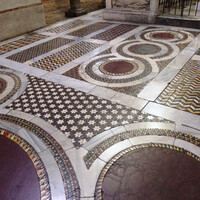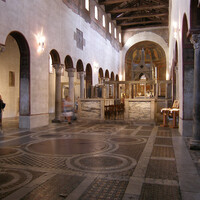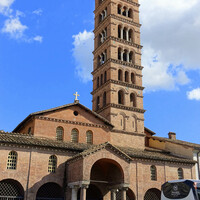Santa Maria in Cosmedin
Type:
Churches,
Pavements,
Minbars and pulpits
Date:
Twelfth-century restoration of an eighth-century structure
Location or Findspot (Modern-Day Country):
Italy
Description:
The basilica Santa Maria in Cosmedin was likely founded in the sixth century within a Greek community in Rome and later rebuilt in the eighth century. Pope Adrian I (r. 772–95) promoted its reconstruction around 782, when it became the home to a community of Greek monks escaping iconoclastic persecution in the Byzantine Empire. The present form of the church reflects a significant twelfth-century remodelling of the eighth-century building. It preserves a seven-story brick bell tower built in the twelfth century.
The interior is well known for its Cosmatesque (or Cosmati) pavement, added during the restoration of the first half of the twelfth century. "Cosmatesque" refers to a style of opus sectile ("cut work") named after the Cosmati family of marbleworkers and sculptors who were active in Rome. During the twelfth and thirteenth centuries, this family specialized in decorative mosaics, primarily for church floors, formed from geometric inlays that were cut from Ancient marbles. One recognizable feature of Cosmatesque floors is the use of roundels made from sliced porphyry columns.
The Cosmatesque floor at Santa Maria in Cosmedin extends into the schola cantorum, an enclosure for the performance of the liturgy. This area preserves two twelfth-century ambos, a type of elevated marble lectern or pulpit positioned on either side of the choir and used for readings during the Mass.
The interior is well known for its Cosmatesque (or Cosmati) pavement, added during the restoration of the first half of the twelfth century. "Cosmatesque" refers to a style of opus sectile ("cut work") named after the Cosmati family of marbleworkers and sculptors who were active in Rome. During the twelfth and thirteenth centuries, this family specialized in decorative mosaics, primarily for church floors, formed from geometric inlays that were cut from Ancient marbles. One recognizable feature of Cosmatesque floors is the use of roundels made from sliced porphyry columns.
The Cosmatesque floor at Santa Maria in Cosmedin extends into the schola cantorum, an enclosure for the performance of the liturgy. This area preserves two twelfth-century ambos, a type of elevated marble lectern or pulpit positioned on either side of the choir and used for readings during the Mass.
Relevant Textbook Chapter(s):
4,
7
Image Credits:
Wikimedia Commons





